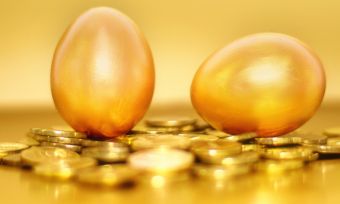It’s never too early to start your KiwiSaver investments. The longer you save for your retirement, the longer you’ll have to grow your nest egg. But to ensure that you maximise your returns, you need to understand the difference between the basic KiwiSaver fund types, and which ones are most appropriate for where you are on your KiwiSaver journey.
Below, is an overview of the five different types of KiwiSaver funds, plus the range of returns offered by the top-10 performers of each fund type over the last five years, according to the data on Canstar’s KiwiSaver comparison tool.
Defensive/Cash KiwiSaver funds
In terms of risk, defensive or cash funds are the safest type of KiwiSaver investments. This is because they usually hold less than 10% in growth assets, such as stocks and shares, which can fluctuate in value. Instead defensive funds hold things like cash and government bonds.
Past 5-year range of returns: 1.5%-2.2%
Defensive KiwiSaver funds: who are they good for?
Defensive funds are pretty much like putting your money in a regular savings account with a bank. You money is safe, and won’t get hit by stock market slumps, but the trade-off is that you won’t earn great returns. As you can see from the above figures, recent returns haven’t even keep up with inflation.
As such, defensive funds are ideal places to park funds that you have earmarked for use in the near future, or don’t want to risk losing. For example, if you’ve used KiwiSaver to save for a house deposit that you want to access in the coming months. Or if you’re close to retirement and have earmarked a portion of your KiwiSaver to pay off a mortgage, or to splurge on a celebratory holiday.
Conservative KiwiSaver funds
Conservative funds are, again, best suited for risk-averse investors. Their make-up is similar to cash/defensive funds: mostly invested in bank deposits and government bonds, but with a higher proportion of stocks and shares, often around a third of investments.
This extra focus on growth assets means that there’s more opportunity for slightly higher returns:
Past 5-year range of returns: 1.9%-3.5%
Conservative KiwiSaver funds: who are they good for?
As with a defensive fund, a conservative fund is generally suited to those who plan to withdraw a sum withing a fixed timeframe, or for somebody who doesn’t want to see their investments decline in value over the near term.
A conservative fund can also be a great option if you want to diversify your KiwiSaver investments and park a chunk of funds in a lower-risk fund, while still earning reasonable returns.
Balanced KiwiSaver funds
If you join KiwiSaver and don’t choose your own fund, you are assigned a default provider and fund. Currently, the default providers are:
- BNZ
- Booster
- BT Funds (Westpac)
- Kiwi Wealth
- Simplicity
- Superlife
But all default funds are balanced funds, which contain between around a third to two-thirds of growth assets (shares and property, etc). Their greater proportion of growth assets means that balanced funds have more opportunity to earn decent returns, while still playing it cautious with a fair chunk of less riskier investments.
Past 5-year range of returns: 3.5%-6.1%
Balanced KiwiSaver funds: who are they good for?
When KiwiSaver first started, default funds were all conservative funds. However, a couple of years ago they were switched to balanced funds, to ensure that people were not proactive enough to choose their own KiwiSaver funds didn’t miss out on possible long-term gains.
However, overall, balanced KiwiSaver funds are generally suited to those seeking mid-range, long-term returns, and who expect to withdraw their KiwiSaver money within the next five to 10 years.
Growth KiwiSaver funds
Growth KiwiSaver funds consist mainly of growth assets, from around 63% to 90%. As the name suggests, these funds have the potential for higher returns and balance growth. However, the downside is that they’re more prone to swings in value, as investments move up and down with the market.
Past 5-year range of returns: 5.1%-10.3%
Growth KiwiSaver funds: who are they good for?
If you’re heading into growth fund territory, then you need to have a fairly large appetite for risk. This fund type is generally suited to an investor who does not expect to withdraw their funds for at least 10 years, and isn’t worried if their balance falls during this timeframe.
When the pandemic hit back in early 2021, there was a big drop in the share market, which hit growth KiwiSaver funds particularly hard. However, those investors who rushed to switch their money into more conservative funds only crystalised their losses, and missed out on the swift market bounce-back.
Such examples of market volatility only highlight the need to focus on long-term KiwiSaver investment growth.
In the first decades of KiwiSaver membership, growth funds can be a good investment tool to really kickstart your retirement savings, or to help grow a deposit for a first home.
Aggressive KiwiSaver funds
Aggressive KiwiSaver funds are for investment thrill seekers with an extremely large appetite for risk. These types of KiwiSaver funds hold a large proportion of their investments in growth assets – at least 90% to 100%.
Aggressive KiwiSaver funds are generally suitable for investors who are in it for the long haul, and are looking for strong long-term growth. But remember, it’s important to be comfortable with watching sharp drops in your balance before you opt for this fund type.
Past 5-year range of returns: 2.2%-8.1%
Aggressive KiwiSaver funds: who are they good for?
Aggressive KiwiSaver funds are generally for investors who aren’t planning to withdraw funds for at least 10 years, and who want to apportion at least part of their KiwiSaver balance to chase the best possible returns.
However, as you can see from the returns from the top-10 aggressive funds on our database over the past five years, aggressive funds have failed to match the performance of growth funds, which highlights the risks involved.
What else to consider when choosing a KiwiSaver fund?
You don’t have to put all your KiwiSaver eggs in one basket
One of the key considerations when it comes to any investments is diversification. You don’t have to go all in with one risk/fund profile. Some KiwiSaver providers allow you to split your KiwiSaver funds between different funds. So, for example, you could keep a third of your money in a safer, balanced fund, while chasing higher returns with the rest of your money in a growth fund.
Don’t set and forget your fund type
The type of fund type that best suits your investment profile changes as you age and your KiwiSaver investments grow. It’s important to regularly review your KiwiSaver and to be proactive in your choice of fund.
When a young person starts their KiwiSaver journey, growing their funds is often their key consideration. While a person facing retirement will often care more about reducing their fund’s risk profile to preserve their balance.
To this end, some KiwiSaver providers offer investment products that automatically move investors’ funds across risk profiles as they age. Such products can provide an easy way to manage time-of-life KiwiSaver fund choices.
How much you are paying in fees, against the rate of returns?
Generally speaking, you can expect to pay more in fees for funds containing a greater proportion of growth assets. This is because the rate of return is expected to be higher.
Also, many growth funds are more actively managed, rather than passively following a computer-compiled stock-market index. For more on the differences between active and passive funds, check out our story: Active Investing vs Passive: What it Means for your KiwiSaver.
Are you using KiwiSaver to help save for a first home?
If you are using KiwiSaver to help save for a deposit on a first home, then you’ll need to take an active interest in your choice of fund. Growth funds can be a great vehicle to help build a sizeable deposit. However, once you reach your savings goal, you don’t want to risk losing your deposit on a market downturn.
If you’ve funds in KiwiSaver that you plan to withdraw in the short term for a first home deposit, a lower-risk defensive or conservative fund can provide the assurance that your money will still be there when required.
Compare KiwiSaver Providers with Canstar
If you’re comparing KiwiSaver funds, the comparison table below displays some of the products currently available on Canstar’s database for a KiwiSaver member with a balance of $50,000 in a Growth fund, sorted by Star Rating (highest to lowest), followed by company name (alphabetical) – some may have links to providers’ websites. Use Canstar’s KiwiSaver comparison selector to view a wider range of retirement funds. Canstar may earn a fee for referrals.
To read more about our latest KiwiSaver Awards click this link or to compare KiwiSaver providers, click on the button below.
Compare KiwiSaver funds with Canstar
About the author of this page
This report was written by Canstar’s Editor, Bruce Pitchers. Bruce has three decades’ experience as a journalist and has worked for major media companies in the UK and Australasia, including ACP, Bauer Media Group, Fairfax, Pacific Magazines, News Corp and TVNZ. Prior to Canstar, he worked as a freelancer, including for The Australian Financial Review, the NZ Financial Markets Authority, and for real estate companies on both sides of the Tasman.
Enjoy reading this article?
You can like us on Facebook and get social, or sign up to receive more news like this straight to your inbox.
By subscribing you agree to the Canstar Privacy Policy





Share this article